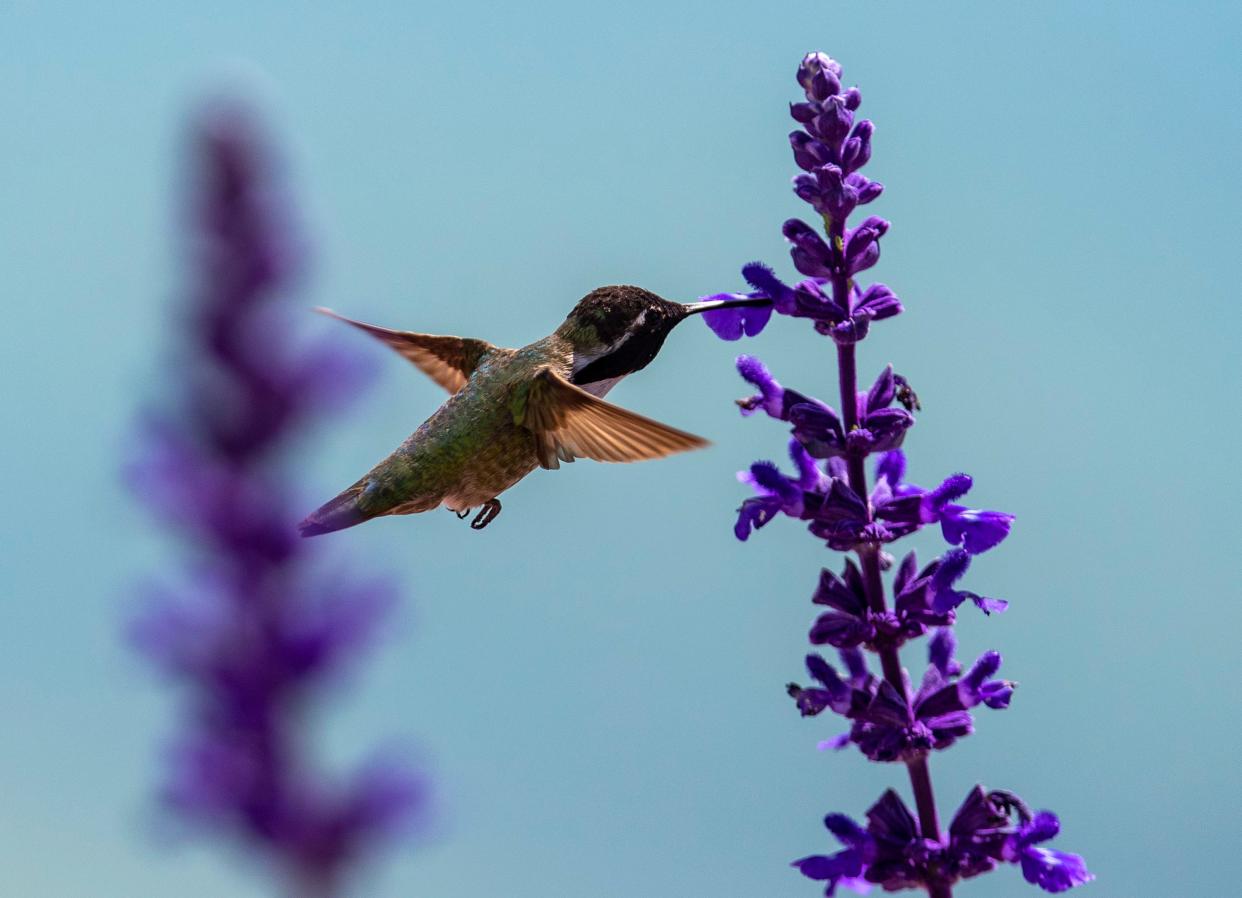Want hummingbirds to visit your garden? Here's what to plant. | Kulick
Chances are you, or someone in your household, are beginning to think about the garden for your home. For some it may be a simple flowerbox on the porch, turning the ground over for the bounty you will see on your table, a plant or two around the house or in pots, or maybe even more ambitious, flowers of all types everywhere on your property and the garden with produce as well!
As we all begin to look forward in earnest to the warmer weather and sunshine, so do our feathered friends. In particular many of us enjoy seeing “flying jewels” or hummingbirds in and around our gardens during the summer months. Now is the time to plan how to attract them to enjoy both their beauty and aerobatics.
The key to attracting hummingbirds to your garden is to plant nectar-rich flowers and create a friendly habitat for them. Since I am among those who wonder how to attract these beautiful birds to my (little) garden area, I knew I needed to turn to a source that is wise and old. In this case, the Old Farmer’s Almanac. Since the first edition of the almanac was published in 1792 by Robert B. Thomas, and it has stood the test of time (perhaps weather predictions are likened to the groundhog on occasion), I knew there would be solid information for all of us.
First, keep in mind that hummingbirds are attracted to brightly colored flowers that are tubular and tend to produce the most nectar. These would be perennials (a plant that continues to return year after year) such as daylilies, bee balms and columbines, or biennials (plants that complete their life cycle in two years) such as foxgloves and hollyhocks, along with many annuals (generally plants that grow from seed and last one growing season) such as petunias, impatiens and cleomes.

Since hummingbirds need a friendly habitat, you’ll want to make sure there is available shelter and water and a safe place for them to land. It is recommended that you leave some space between your plants to give the bird enough room to hover over and navigate from flower to flower. Hummingbirds need shade, so places like flowering shrubs, dwarf trees, vines and the like can make a nice habitat, from ground level to 10 feet or more.
These birds love water, especially moving water. Perhaps a small fountain, sprinklers or even from the hose gives them their own “bird bath.”
As the birds do not have a keen sense of smell, they are attracted to and rely on bright colors. Something I certainly didn’t know, but now makes sense, they are especially attracted to the color red. Ever notice those hummingbird feeders? Obviously the manufacturers did their homework. So, plants that are red will likely attract these “flying jewels” to your garden.
Photographers who take those photos of the hummingbird in flight often catch those wings in motion. A hummingbird is capable of beating its wings about 70 beats per second. You read that right, per second. This is why humans hear an audible buzzing sound. All this and as the tiniest of all birds, they weigh less than an ounce and measure only about 2 inches long. Whew!
More: Spring is hummingbird migration season: Interactive map shows where they will be
As you ready yourself for those "Jeopardy!" questions, the hummingbird can fly in any direction, even backwards and can hover in midair while sipping nectar from the flowers using their long beaks.
A hummingbird moves around so much that it must eat at least half of its body weight each day to replace the calories burned, hence they eat almost constantly from the start of the day to finish, visiting roughly 1,000 flowers a day. To the delight of many, watching a hummingbird is like watching a living suncatcher. Their iridescent feathers and quick movements allow them to live up to the nickname “flying jewels.”
As you plan your garden this year, why not give some thought to adding some inviting flowers and colors that will create a delightful opportunity to watch the splendor that Mother Nature has provided!
Debbie Kulick is an EMT who writes a weekly news column for the Pocono Record.
This article originally appeared on Pocono Record: These flowers, plants will bring hummingbirds to your garden | Kulick
